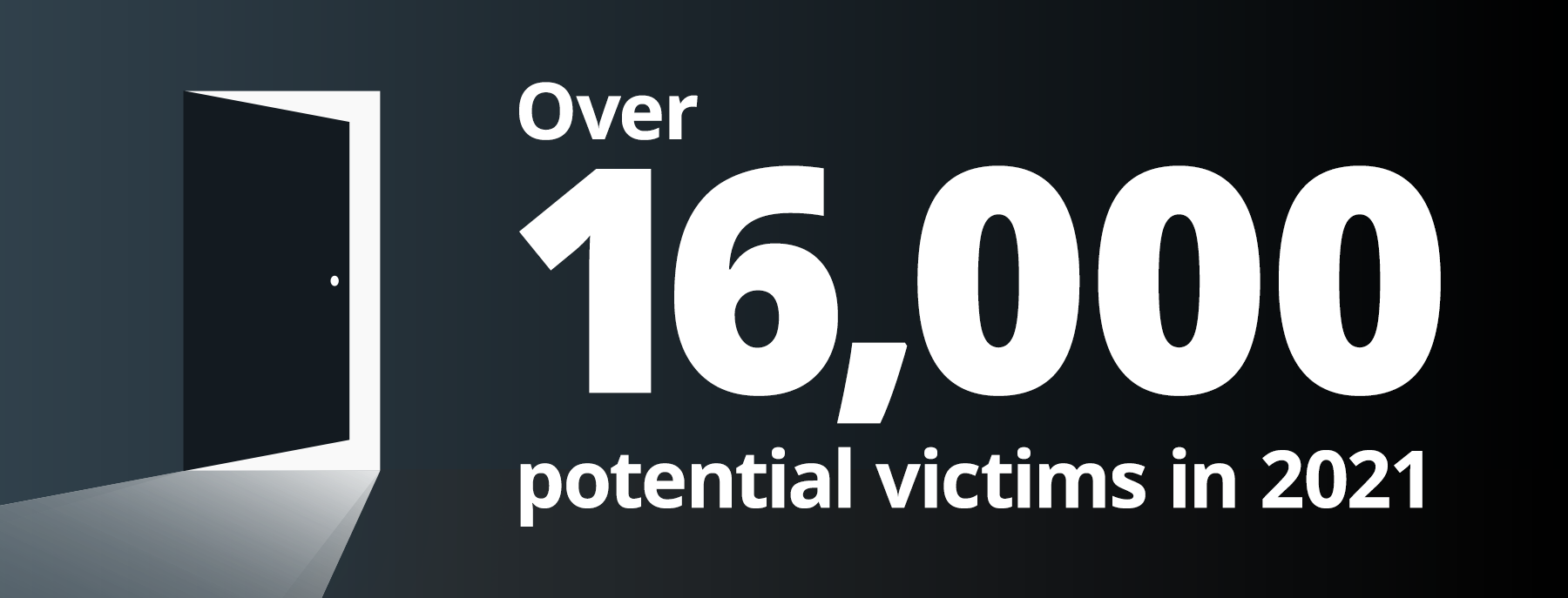Human trafficking can occur anywhere – the reality of domestic sex trafficking is that it is closer than you think. Victims of domestic sex trafficking are individuals targeted within their own neighborhoods, cities, towns, or country. While numbers are massively under-reported, the National Human Trafficking Hotline estimated there were over 10,000 trafficking situations and over 16,000 potential victims in 2021.
Domestic Sex Trafficking in the U.S.
Traffickers can be anyone. According to data collected by the National Human Trafficking Hotline, the top recruitment locations for traffickers are internet dating sites, on the street, or through social media. Common elements employed by traffickers to control their victims include the use of force, fraud, and coercion. Victims are often subjected to physical or sexual abuse, restrictions on movement and communications with family members or friends, in addition to constant surveillance.
“Human trafficking thrives in an unequal world. Human traffickers often prey on our most vulnerable communities, frequently targeting victims who are reluctant to call the police, lack access to services and programs, or feel excluded or ostracized. Our partnerships must be broad enough to reach and to include diverse groups and marginalized communities”.
– Ambassador Cindy Dyer, U.S. Department of State “2023 Trafficking in Persons Report”
Understanding the Signs of Domestic Trafficking
The financial industry has a significant advantage in finding vulnerable people who may be victims of sex trafficking. As noted in our eBook, Human Trafficking: Know the Behavior, Uncover the Crime, there are key indicators of human trafficking that can help bank and credit union investigators discover victims within their customer base. These include:
- Women or girls are predominately preyed upon, with Indigenous women, 2SLGBTQI+ people, children and youth in the welfare system, and economically disadvantaged people at an elevated level of risk.
- High-risk occupations including exotic dancer, masseuse, model, server, hospitality, or personal services worker.
- A customer who has recently opened a new account.
- A customer’s online presence or social media accounts — are they active, new, is their public information linked to their customer information like phone numbers or email accounts? Do posted images contain pictures of cash, or visible tattoos that have typical trafficker markings such as bar codes, initials, crowns, roses or currency.
- Note day-to-day behaviors, which may change from typical activities like paying for groceries and bills, to more limited transactions that include hotel rooms, travel, online ads, fast food purchases.
- Examine transaction history looking for higher risk purchases that could show regular travel to other geographic locations, hotel rooms, online ads for escort or personal services, fast food, transportation, or internet bills. The absence of groceries, rent, transportation costs, regular payroll, personal items, or entertainment should be noted.
- Paying attention to account balances, with averages near or at zero.
While a single behavioral or financial indicator may not clearly indicate human trafficking activity, each piece of evidence identified and put into context can help uncover the story of human trafficking. Understanding the behaviors of human trafficking is the first step in helping victims become survivors.
Human trafficking comes in many forms. Throughout this special blog series, we will focus on three of the primary forms – domestic sex trafficking, international sex trafficking and forced labor – where financial institutions can have the most significant and immediate impact. Next week our series will focus on detecting and preventing international sex trafficking, with key indicators for financial institutions.




